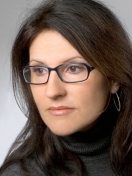
Susanne Maria Reiterer
Universität Wien, Institut für Sprachwissenschaft,
Sensengasse 3A, 1090 Wien
Keynote:"Individual Differences in multiple foreign language learning: from brain to behavior"
There is huge individual variation specifically in adult foreign language acquisition (frequent scenario for L3), with regard to all subsystems of language learning: phonetic, lexico-semantic, morpho-syntactic and pragmatic domain. The underlying principles are still not known. Are they subject to more biological, psychological, cognitive or social constraints? However, in the language sciences, “aptitude” has long been a neglected research field, despite a growing recent interest by the cognitive neurosciences. In my past and current research I tried to fill this gap by bridging disciplinary boundaries. I employed brain imaging, psych-linguistic testing and tried to model language abilities or individual profiles using a Gaussian distribution. Higher or lower ability in a certain linguistic trait is represented towards the tails of the bell curve, whereas classical theories are built for the mid-range only. With this “spectral” approach, I propose to investigate more closely also the 30% speakers with higher and lower aptitudes by applying brain imaging to determine brain functions correlated with differences in language ability in combination with large scale psycho-socio-cognitive profiling. In my research so far I had a strong focus on the phonetic level as one example/domain of foreign language acquisition, also using the terms “pronunciation”; “speech imitation”; “speech production ability” or simply “phonetic talent”. The main underlying question being “what makes a good pronunciation and what does it correlate with in terms of neural, cognitive, psychological and social processes? For this aim we investigated in multiple studies a corpus of over 300 mainly - but not exclusively - German (L1) learners of diverse foreign languages (L0,L2,L3…main L2 being English) so far with various neuro-imaging, psychological and linguistic methods.
Short Bio:
Currently Assistant Professor at the Linguistics Department of the University of Vienna in the Research Unit “Language Learning and Teaching Research”. Her research focus is on the Neurobiology of Second Language Acquisition and Learning, Cognitive Neuroscience, Individual Differences in language learning ability and Language Aptitude. Formerly Researcher at the Department of Neuroradiology, University Clinic of Tübingen, Germany. Postdoctoral research fellow at the Universities Tuebingen and Stuttgart.
Holds an M.A. in Applied Linguistics and Teacher Education Certificate (English and Italian), from the English and Romance Languages Department at the University of Vienna. Holds a PhD in Psychology (Biological Psychology), from the University of Vienna, Austria. Her research interests comprise: neurolinguistics, second language acquisition, bilingualism/multilingualism and the brain, language aptitude/talent, individual differences in expertise of language learning, brain imaging, cognitive neuroscience of language.
A note on the term MULTILINGUALISM from a neurocognitive point of view:
Multilinguality, multilingualism, polyglottism or simply, multiple language learning, has become a major issue in the field of cognitive neuroscience. The big bang of neuroscientific investigations into the “multilingual brain”, as the most frequent cover term says, has happened only recently. Since Cognitive Neuroscience is influenced by various disciplines, such as, neurology, biology, psychology, physics and engineering sciences, information sciences, philosophy, linguistics and language sciences, the terminology used for research on the neurobiology of foreign language acquisition and multilingualism became almost uniform. All kinds of phenomena that deal in one way or the other with the process of learning more than one language or dialect is subsumed under the umbrella term “bi-or –multi-lingualism”. The most commonly terms used: early versus late and high versus low proficiency multilinguals. This seems to have “emerged” under the constraints and for the benefits of interdisciplinary communication.
Sponsored by





